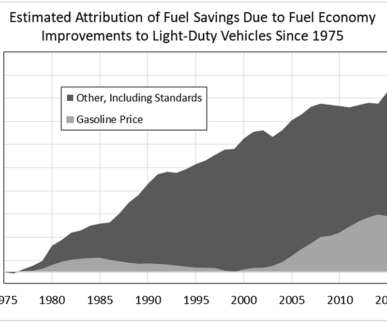Study estimates fuel economy improvements to US light-duty vehicles from 1975–2018 saved 2T gallons of fuel, 17B tons of CO2
Green Car Congress
MAY 3, 2020
They further estimated that roughly one-fifth of the savings can be attributed to gasoline price increases over the period and four-fifths to fuel economy and greenhouse gas (GHG) standards. Second, they estimated fuel savings using the FHWA data on vehicle miles, fuel use and miles per gallon (mpg).













Let's personalize your content